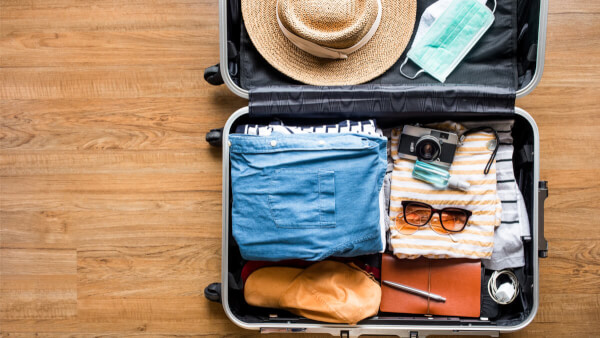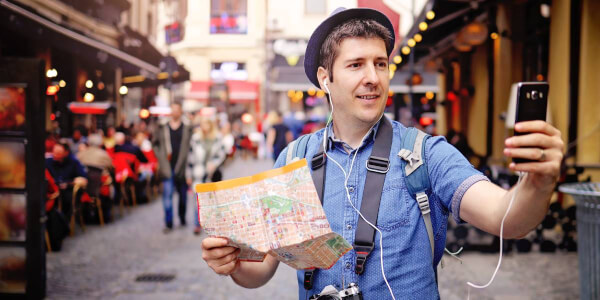UBank vs Wise card - Which is the better travel card to use overseas in Australia?
Looking for a travel card to use overseas? We compared the fees, features, and benefits of two top travel cards: Ubank vs Wise, for Australian travellers.

Travel money cards allow users to load foreign currency before travelling, which they can then spend or withdraw from ATMs as they travel. One advantage is that you’re locking in the exchange rate available when you add money - and of course, they are also pretty convenient and safe. The Commonwealth Bank travel money card is issued by Visa®, and comes with a range of features, and some fees you should consider before choosing to use it.
This article provides an in-depth analysis of the CommBank Travel Money Card, examining its features, fees, benefits, and limitations. We'll also explore the crucial aspect of exchange rates and introduce an alternative: Wise, that can help save by offering currency conversions at mid-market rates and low, transparent fees.
| Table of contents |
|---|
The CommBank Travel Money Card is a prepaid, reloadable Visa card designed for international travel. It allows you to load up to 16 currencies before you depart, aiming to simplify spending and potentially lock in exchange rates. Let's review its key features.
✈️ Don't leave without the right card. Find the best travel card for overseas and spend smarter during your trip.
Getting a CommBank Travel Money Card involves the following steps:
You must be 14 years of age or older, and be a new or existing CommBank customer to order your CommBank Travel Money Card.
The CommBank Travel Money Card supports the following 16 currencies:
FJD, IDR, and INR can only be loaded in branch and NetBank, but once loaded further currency reloading can occur in the CommBank App.
There is no fee for ordering the Commbank travel card, loading/reloading, or for transferring funds. For cash withdrawals from ATM, CommBank charges AUD 3.50 in the from currency from which you'll be making the withdrawal. But there is another cost you'll need to account for: exchange rates on currency conversion.
When you’re choosing a travel money card, it’s smart to check the exchange rate that’s used to convert your balance from dollars to the currency you need for your holiday. The exchange rate that applies when you load or reload foreign currency onto your CommBank Travel Money Card, or when you transfer between currencies is the CommBank Retail Foreign Exchange Rate. For purchases and withdrawals that involve currency conversion, CommBank Travel Card uses the Visa exchange rate at the time.
These rates would generally be higher then the mid-market exchange rate you would usually see on Google. They markup means you receive less foreign currency for your Australian dollars than you would with a provider using the mid-market rate.
Wise always use the mid-market rate for currency conversion, and charge a low upfront fee instead of adding a markup to the rate. That makes it easier to see the true cost of your currency conversion with full transparency.
Wise offers a multi-currency account that lets you hold and manage currencies. The linked card allows you to spend in supported currencies at the mid-market rate. Wise allows you to withdraw up to AUD 350 per month from international ATMs for free (in two or fewer withdrawals). After that, a small fee of 1.75% of the amount over AUD 350 applies. Plus, there's a $1.50 fee for each withdrawal over two withdrawals.
Explore Wise Interest to earn potential returns on your AUD and USD*
Your money is invested in a fund of government-backed securities—without being locked away. So, you can still spend your money as usual while it has the opportunity to grow.
* Wise Interest is a custody and nominee service offered through Wise Australia Investments Pty Ltd (ACN 659 961 083) (AFSL: 545411). Franklin Templeton is the issuer and manager of the Franklin Government Cash Fund. Capital at risk. Growth not guaranteed. Terms and conditions apply. Please refer to the Wise Australia Interest Legal page for Wise Australia Investment's Financial Services Guide and the fund's Product Disclosure Statement to see if this product is right for you.
The CommBank Travel Money Card offers a familiar and accessible option for Australians embarking on international adventures. Its ability to preload multiple currencies and its acceptance at Visa locations worldwide provide a degree of convenience. However, the card's exchange rates used for currency conversion can affect your travel budget.
As an alternative, Wise, with its commitment to the mid-market rate, allows you to stretch your travel budget further and enjoy your adventures to the fullest.
Compare CommBank Travel Card vs Wise 👉
Ultimately, the best choice depends on your individual priorities and travel habits. Before your next trip, carefully weigh your options and choose the solution that best aligns with your financial goals.
*Please see terms of use and product availability for your region or visit Wise fees and pricing for the most up to date pricing and fee information.
This publication is provided for general information purposes and does not constitute legal, tax or other professional advice from Wise Payments Limited or its subsidiaries and its affiliates, and it is not intended as a substitute for obtaining advice from a financial advisor or any other professional.
We make no representations, warranties or guarantees, whether expressed or implied, that the content in the publication is accurate, complete or up to date.

Looking for a travel card to use overseas? We compared the fees, features, and benefits of two top travel cards: Ubank vs Wise, for Australian travellers.

The most cost-effective ways to get foreign currency. Compare banks, exchange services, and ATMs with tips to avoid hidden fees and get the best exchange rates.

Planning to use your UBank card to make ATM withdrawals internationally? Read on to understand the true cost of overseas transactions with UBank.

Wondering if Travel Money Oz is the right solution for you? Our guide outlines everything you need to know about their currency exchange and travel money cards.

If you're trying to decide between Travelex and Travel Money Oz for your international money needs, read on for our side-by-side comparison of the features.

Side-by-side Comparison of Westpac Travel Card vs Wise Travel to help Australian users decided which is a better travel card for spending abroad.